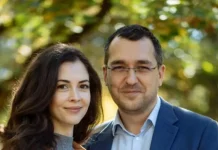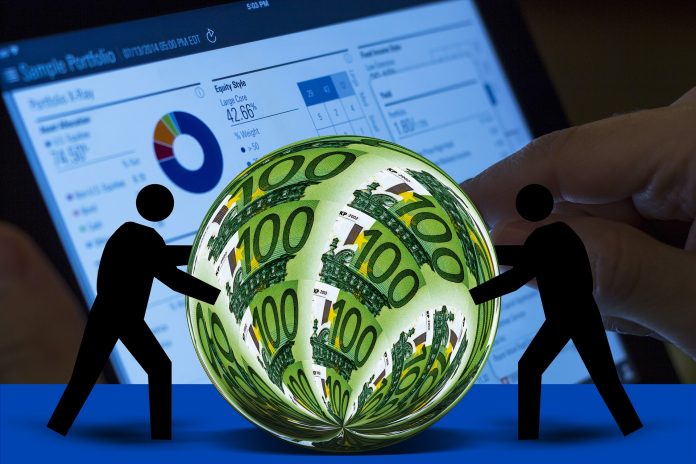Universul.net is publishing an essay in three parts by Cosmin Marinescu, an economist, professor at the Bucharest Academy of Economic Studies and adviser to President Klaus Iohannis on economic and social policy. Prof. Marinescu’s essay looks at the global and regional economic challenges the European Union faces and how Romania’s economy fits into the picture_and the way forward for its economy in the current global context.
In the course of the development of a nation, it is important to look back, to be aware of the progress made but also from the notion that the present cannot be separated from history, as path-dependence is an immutable factor in economic and social changes. It is also important to look around, in order to understand meanings and trends of current transformation or evolutionary change, directions that should be decoded and exploited in advance, in favor of an optimally necessary development vision.
Observing Romania’s path in the European context is, first of all, a process of reconfirming our identity in a rapidly changing Europe, an introspection of what we are and a projection of what we want to become. In this framework, the paradigm shift becomes a collective imperative, generated by the new economic realities and the need to reaffirm the values and principles that define us as Europeans.
- The evolution of the European Union: from fundamentals to a new paradigm
Robert Schuman’s declaration of May 9, 1950 is considered the first step towards what the European project means today – a Union of countries that adhere to common principles, peace and solidarity being the essential pillars of the European construction. But this peace of more than seven decades, which we, all the citizens of the Union, still enjoy today, started from an economic objective. The union of two major continental industries, steel and coal, stopped the war in Europe 74 years ago.
Solidarity is the principle that the successive states of the European Union have subjected to internal challenges, especially along the lines of gaps or even East-West cleavages. History reminds us that without adaptations and permanent revisions of the premises, the vision can become limited or inadequate to current and future challenges.
Currently, the Union as a whole is facing global economic challenges, which threaten the position of the community bloc in the world economy, but also internal political challenges, which are shaking political stability at the level of the Union amid the rise of radical and extremist political currents, as is happening these days in France, but not only.
The Union now comprises 27 countries, and this diversity has significantly changed its internal dynamics. The economic fundamentals and decisions shaping the EU’s destiny are or should now be influenced by all 27 member states. And this aspect requires, at the level of the European institutional construction, new fine-tuning to strengthen cohesion and sustainability within the enlarged European family.
In the current global context, economic competitiveness must become the imperative of a new development vision at the level of the European Union. The affirmation of a change of direction begins with a careful evaluation of existing resources and future opportunities, in the extension of the economic idea that the prosperity of some nations offers opportunities for development to others. Common economic goals stop wars and bring peace.
The Union needs an adaptation of vision to its authentic European identity, as a set of values and principles, so that the whole outcome resonates with European ambitions. Accession is not a model of induction, but of two-way cooperation for an evolved whole that the acceded states have experienced, taking over public policies and benefiting from the absorption of funds. But there must also be a corollary. The EU can learn from the experience of the transition models experienced by Eastern Europeans, marked by institutional transformations and political instability, in order to create a superior arrangement capable of responding to the Union’s ambitions as a relevant actor on the global stage.
This development is not limited to the EU’s internal strengthening and cohesion, but also aims at an anticipatory, mature approach to the diversity of outcomes and future challenges. The particularities of the Central and Eastern European states seem to continue to drive the European project, showing that the Union has not fully anticipated the scale of all the challenges resulting from enlargement. By properly understanding them, the EU can strengthen its fundamentals and maximize its strategic opportunities.
We need a paradigm shift, both at European and national level. Today, Europe itself needs to reassess its priorities and ambitions in order to avoid the trap of idealised objectives that can seize the European economic ‘engine’ – a key asset for maintaining the EU’s relevance and influence on the global stage.
The European Union has created a mechanism based on cooperation and cohesion, which has evolved today at the scale of the 27 actors. To achieve synchronization in the new whole, 27 countries now have a common normative line, access to the single market, free movement of citizens and national economies that progress continuously, quantitatively and qualitatively.
Under the pressure of post-pandemic reconsolidation and with a continent whose eastern borders are smoking, the Union must once again turn its gaze to its own essence and its citizens. We are facing major challenges, some of which are urgent, such as unprecedented demographic ageing and climate change, challenges on which we must intervene through appropriate policies, which provide realistic and effective responses, otherwise the consequences will be felt deeply and in the long term.
Without a pragmatic and efficient economic vision, Europe risks becoming demographically extinct, transforming the phrase „the old continent” into a harsh reality, difficult to overcome. Current policies weigh on the shoulders of an aging population, and the economy suffers losses of competitiveness. In addition, the gradual decline of genuine economic liberalism risks slowing down the progress of European nations or even reversing it.
- European Romania: the imperative of transformation, opportunities and vision
For Romania, joining the European Union was a crucial step, bringing with it much more coherent public policies, which considerably influenced the country’s trajectory. Romania has navigated well among the challenges and opportunities of membership in the Union, demonstrating resilience and achieving important progress in its economic development, but also in strengthening its prestige in the region and on the global stage. However, current quantitative advances are not sufficient in the long term, they require substantial support to become sustainable, and to contribute to the development of the country’s own „social capital”, as a vector for further modernization and progress.
⇒ Changing the economic development model
Prior to the pandemic, policies focused on stimulating consumption led, over time, to the accumulation of imbalances in public finances. These were amplified by the extraordinary measures during the pandemic and, subsequently, by those associated with the energy crisis and the explosion of specific prices. Hence the perpetuation of budget deficits and major imbalances in the current account – an economic model that has generated excessive dependence on imports and exposed the economy to increased risks.
But Romania seems to have embarked on the path of correcting these structural vulnerabilities. Currently, even in the context of a recovery in consumption, the economic recovery is primarily based on investments, especially investments from European funds in infrastructure, education, energy and technology, which have created a solid basis for growth and increased resilience to external shocks. The recovery of consumption can thus be seen as part of the economic recovery, if it is managed responsibly.
Each stage taken by Romania represents a natural step in its economic evolution, underlining the need for a new perspective, one adapted to the digital challenges of the new economy, in which opportunities are created and recreated with a strategic vision.
The vision for Romania is the economic model based on investments. The paradigm shift, however, is related to the strategic redefinition of objectives and the deepening of this vision. We need to think in terms of sustainability and efficiency, anticipate the challenges, and then adapt the model to realistic long-term targets.
⇒ The essential stake of European funds
Accessing and using European funds must remain Romania’s key priority. In this regard, it is important to focus on identifying and maximizing the real impact of these funds on the country’s economic and social development.
Romania has managed to attract substantial European funds, and progress in this regard has contributed to the country’s economic and social development. Since joining the European Union in 2007 and until the end of 2023, Romania has absorbed European funds worth over 90 billion euros, at a national contribution of approximately 30 billion euros. The major contribution of these funds to the country’s economic development, through the financing of various projects and initiatives, structural reforms and investments in infrastructure, is visible and will increase in the coming years.
For the 2014-2020 programming period, Romania reached an absorption rate of over 93% of the funds allocated for cohesion. Also, out of all the funds available from the 2014-2020 multiannual financial framework, Romania attracted over 47 billion euros, reaching an absorption rate of almost 90%.
In the 2021-2027 multiannual financial framework, Romania has allocated 51.2 billion euros, of which it has absorbed almost 3% so far. In addition, through the NextGenEU mechanism and the National Recovery and Resilience Plan (NRRP), Romania received non-reimbursable funds of €5.6 billion in the period 2021-2023.
It is essential that Romania continues to access and use these funds efficiently, in order to support the country’s sustainable development, and thus contribute to strengthening our position within the Union. However, there is a need to improve the management and implementation of projects, to increase the administrative capacity in the sphere of EU funds, but also to ensure greater transparency in the use of resources.
⇒ Strengthening the private sector
In recent years, Romania has gone through unprecedented critical moments and economic challenges, and the response to these has been essential for strengthening economic resilience. In the context of the COVID-19 pandemic, collaboration between the state and the business environment has been essential for the proper management of the challenges of the crisis.
Although we have faced difficulties, Romanian entrepreneurship has shown that it can cope with the changes generated by extraordinary situations. Large companies have demonstrated not only resilience, but also solidarity. Our startups continued to attract investment, and companies continued to perform strongly.
Just as an example, the turnover of the top ten companies in Romania’s economy increased in 2023 by a third compared to the previous year, reaching 280 billion euros. The profit of these companies amounted to 27 billion euros, up by almost 40%. At the same time, despite estimates of a possible decline in the labor market, the total number of employees in the top 10 companies increased by 3.8%, reaching about 1.36 million.
The data also indicate an increase in the number of private companies with Romanian capital. For example, the number of Romanian companies with a turnover of over 50 million euros has increased in recent years to 342 companies, but the dynamics of Romanian entrepreneurship can be much more robust, with positive effects on economic resilience.
In order to consolidate, it is necessary to continue facilitating companies’ access to finance, to expand the physical and digital infrastructure as much as possible, and to ensure a competitive legal and fiscal framework for the development of the private sector.
⇒ Resilience and adaptability in the face of change
Romania has taken important steps in economic and institutional transformation, progress evidenced by the transition to an investment-based economic model. The modernization of infrastructure with the help of European funds has brought significant benefits not only from the perspective of physical mobility, but also in areas such as cybersecurity, interoperability and the development of the government cloud.
These efforts demonstrate Romania’s commitment to becoming more competitive on the European market. The diversification of energy production from renewable sources, the realization of BRUA, or the advancement of nuclear and hydrogen-based projects, increase the country’s energy security and strengthen connections with regional markets.
In the context of the COVID-19 pandemic and the crises that followed, Romania has demonstrated resilience and adaptability, by adopting prompt and effective measures. It is important to recognize, however, that this progress is only corrective, and that there are still persistent challenges. Romania must be prepared to face future challenges, and in order to strengthen our resilience we must invest consistently in critical infrastructure, but also in sectors such as energy, transport, health.
The National Recovery and Resilience Plan (NRRP) encompasses an ambitious reform and investment agenda, with a revised total funding of €28.5 billion. At the same time, Romania benefits from complementary funds through Next Generation EU (NGEU) and funds from the multiannual financial frameworks or other categories of external financial support. In total, Romania will have around €100 billion at its disposal by 2027, and the economic and social results should be commensurate.
The unprecedented volume of European funding for Romania raises, however, the fundamental issue of the administrative capacity for absorption and implementation, which must be a strategic objective of the Romanian government in the coming years.
⇒ The strategic role of Romania’s diplomacy in the world
Our country has made important progress in various fields, and the credibility of foreign policy is probably one of these achievements, which requires consolidation and vision. We need a „quality standard” through which we can achieve and continue to respect, in a credible way, that fine balance between national interests, community convergence within the European project and the sustainability of the strategic partnerships to which Romania is a party.
⇒ Priorities in national defense in the context of global alliances
Given the key importance of peace and security for the economy, the stability of strategic defense relations has been and must remain a priority for us, while constituting the foundation underlying economic development. Let’s take the Danube as an example, the river binder of so many European cities and capitals. A geographical datum springing from the heart of Europe, whose course to the outpouring is a lesson about belonging and values. We can see successful developments throughout its course, but only our end of the Danube can become vulnerable, so instead of rivers and commercial ports, the priority was the placement of shields, military bases and NATO defense structures, which would offer us the guarantee of a secure future. On this basis and from now on, military security must also be in line with economic development.
III. Romania in Europe: analysis and projections for the European future
Romania’s destiny is linked to the European Union, not only as a secular anchor of continental geography, but also as an assumed national attachment to Western values and the principles of law of democracy and individual freedom. In the equation of our becoming, European Romania is a historical reality, but also a political, economic and cultural desire.
The current approach comes in the methodological continuation of a comparative analysis published in 2021, under the title Macroeconomic Scoreboard: from the financial crisis to the corona crisis, an analysis dedicated to the pandemic context, when the macroeconomic picture of the world’s countries underwent spontaneous and far-reaching changes.
The present analysis transcends the economic framework related to the pandemic, in order to outline a comprehensive picture of comparative developments, based on various indicators, from macroeconomic to social and sectoral indicators, relevant to Romania’s post-European accession period.
The analysis of European Romania is focused on these two dimensions, the historical and the comparative, with the concern of understanding „where we are”, in relation to „where we started from”, but also „what we have to do next”, as landmarks of a state of affairs and as long-term national development objectives.
The economy is the defining driving force for the development of a nation. All the specific objectives, from supporting education to protecting the environment, are directly correlated with the performance of the economy, both as factors of structural change and from the perspective of the financial resources involved, such as national money and/or European funds.
Romania has made remarkable economic progress as an EU member state, but the macroeconomic and sectoral picture captures both vulnerabilities and delays in the European convergence equation, including in the case of the Union as a whole.
Performance in some respects is sometimes followed, more or less predictably, by the accumulation of vulnerabilities and pressures in other respects. They deepen over time and require corrective measures, the impact of which is reflected on the scale of the entire economic and social system. Sometimes cyclically, sometimes under the pressure of the „black swans”, as in the case of the pandemic, this dynamic complex of interdependencies adjusts itself in a regulatory way, with ups and downs, like the system of communicating vessels.
In all cases, these adjustments are reflected in the dynamics of key indicators, such as economic growth, public finances, sovereign debt, but also in other markers of direction for public policies, such as human capital migration and demography.
The analysis of such indicators is then based on specific maps at European Union level. We have thus designed 15 illustrative charts based on the rankings of the Member States, for each indicator and year, in order to capture the relative dynamics of the EU states and Romania’s position in relation to them.
- Economic growth in the Member States of the European Union
The map of economic growth in the European Union highlights how the economies of the Member States have evolved in relation to the 2 milestones of global crisis, namely the financial crisis of 2009 and the pandemic crisis of 2020. Post-crisis developments and current projections show that the recessionary dimension is much weaker in the post-pandemic years, compared to the period after the 2009 financial crisis. Even if EU economies are still feeling the pressure of certain structural adjustments, there are prerequisites for a strengthening of economic growth across the Union from 2025 onwards.
Romania’s performance in the European context is notable, with Romania registering an average annual growth of real GDP of 3.8% in the last two decades, almost triple the EU average. This sustained growth has accelerated the convergence of living standards, reflected in real GDP per capita growth.
Romania’s economy has shown remarkable resilience in the face of major external shocks, such as the COVID-19 pandemic or Russia’s invasion of Ukraine, which brought war to our borders. During the pandemic, our country recorded one of the lowest economic contractions in the EU, followed by a rapid and sustained recovery in the following years, with economic growth still being higher than the European average.
Post-accession trend. During the analyzed period, Romania’s economy recorded significant economic growth rates, with growth exceeding 3% annually in 10 of the 17 years of the analysis. This development underlines a consistent process of economic recovery, by accelerating the reduction of the gaps with other EU Member States.
After joining the European Union in 2007, Romania benefited from significant economic growth, with an average annual advance of about 4% between 2007 and 2019. This economic trend has now led to the surpassing of states such as the Czech Republic, Finland, Portugal, Hungary and Greece, in terms of nominal GDP.
Economic growth has led to a reduction in poverty in Romania, with the share of the population living below the poverty line decreasing significantly in recent years. However, important inequalities persist, due to the considerable differences between rural and urban areas. Hence the need for increased attention to balanced development at regional level, with the priority being to attract European funds and foreign investments, especially in disadvantaged regions.
The impact of crises. Economic declines were recorded during the global financial crisis of 2008-2009, and in 2020, the year of the COVID-19 pandemic. For example, in 2020, Romania’s real GDP decreased by only 3.9% compared to the previous year, a performance that contrasts with the deterioration of the budgetary situation through an ESA deficit of 9.2% of GDP in 2020, the sixth largest budget deficit in the EU.
The economic performance of some Member States, such as Poland, is significant, which managed to avoid negative real GDP dynamics in the year of the financial crisis, recording an average annual growth of around 3% over the entire period. Malta also recorded the highest economic growth rate, of more than 3% annually during the reference period, outperforming other Member States.
Although European economies seemed to be recovering quickly after 2021, the effects of the energy crisis and inflation are being felt from 2022 onwards, peaking last year. For 2025, the European Commission expects large-scale economic growth, but growth rates between 1% and 3% for most EU countries, amid a stable investment climate, in which European funds continue to play an important role.
To be continued
















